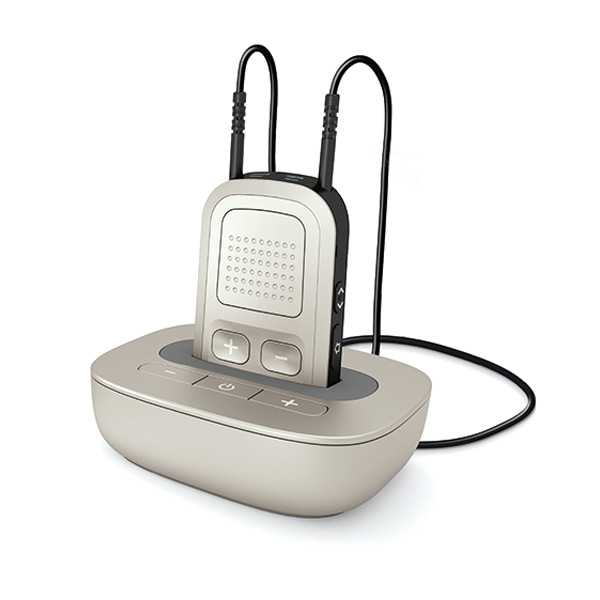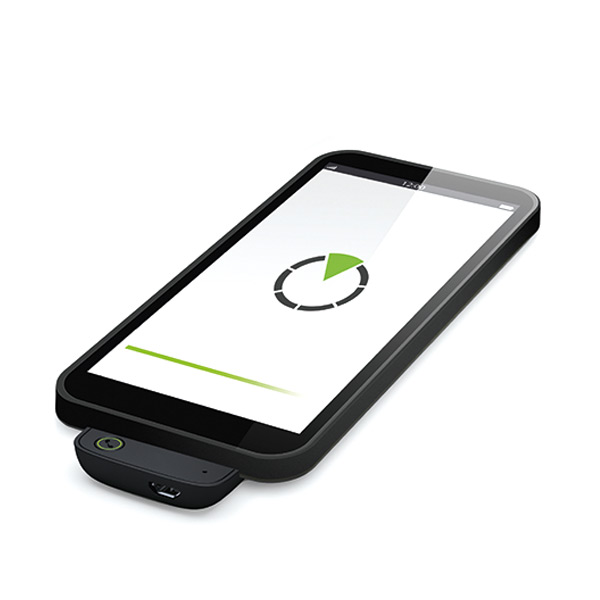Hearing aid accessories are made to enhance the overall experience. Some devices have more accessory choices than others, which is one of the many things we will discuss when you select a hearing device from Niagara Hearing & Speech Clinic. An accessory can turn a good hearing aid into a great hearing aid. With many modern hearing aids incorporating brand-specific features, compatibility is essential when making a choice.
Hearing Aid Batteries
Although technology has expanded in the hearing aid industry, the batteries are still similar. The same four types of batteries are still used for most hearing aid devices. They are easy to identify by colour or number. Orange (13), brown (312), yellow (10) and blue (675) cover the most used hearing aid battery types. Outside of these four, rechargeable batteries are becoming more popular. Not all hearing aids support rechargeable batteries, so it’s a feature that should be prioritized after the evaluation. It will come down to either zinc-air (non-rechargeable) or rechargeable batteries for hearing devices. There are benefits to both sides that a hearing health professional will explain in detail.
Hearing Protection
Noise exposure reaches dangerous levels when out in public. When it interferes with the ability to distinguish familiar sounds, hearing protection is required. Without this protection, hearing loss can become permanent in one or both ears. Feature-packed hearing devices are built with the option of using custom earmolds. Hearing protection is the first line of defence against harmful environmental noise. Protection is available for different activities, hobbies, professions and ages.
- Kids
- Music
- Flying
- Industrial
- Hunting
- Shooting
- Sleeping
- Noise
- Swimming
- Motorsports

Music:
Ideal for performing musicians and concert-goers. Also great for flight attendants, bartenders, waiters, dental professionals. Allows wearer to hear sounds accurately, but at reduced levels. Three filter options available: 9dB, 15dB or 25dB.

Swimming:
For swimming and showering – and they FLOAT! Also provide superb noise reduction.

Sleep:
Offers comfortable and uninterrupted rest. Also great for shift workers with non-traditional hours.

Motorsport:
Designed with a hollow canal for under helmet use to reduce wind buffeting.

Surf:
Designed to prevent surfer’s ear and swimmer’s ear caused by exposure to cold water and wind. The floatable material is molded with a sealed membrane spanning the sound bore that keeps cold water and air out of the ear canal, but allows for conversation and hearing while in the ear.

Occupational:
Ideal for high-noise industrial environments.

iCustom:
For use with any bud/button style earphones.
Assistive Listening Device
Assisted listening devices are amplifiers that enhance essential sounds. The user can hear speech clearly without getting distracted by background noise. Depending on the device, the increase in sound can be as little as 15dB or more than 25dB. Since these are personal devices, they work without interrupting the lives of people around the wearer. Mild-to-profound hearing loss will see immediate benefits from using assistive listening devices. Currently, the three main types of devices are infrared, FM and inductive loop. Assistive listening devices can be used in conjunction with hearing aids and cochlear implants. In some cases, the technology works as an enhancement to an already full-featured hearing device.
Bluetooth and Other Wireless Technology

Many manufacturers are now producing hearing aids that are compatible with Bluetooth or other wireless technology. We offer devices that allow your hearing aids to connect hands-free to your cellphone, iPad, computer, television or even landline. This allows the sound signal that you are listening to, to come directly through both of your hearing aids. The result is a reduction in surrounding noises, improved sound quality and better performance in these environments. With direct connectivity to the devices environmental noises can be reduced or even eliminated completely. Hearing something in your ear without the background noise is an ideal listening environment for anyone, especially those individuals with a hearing loss.
Personal FM Systems

Personal FM systems can be used with hearing aids. They improve communication in background noise or with speech at a distance. This technology allows a person to be directly connected to the speaker. The speech is received directly in the ears through the hearing aids. Ambient noises are reduced and the speech signal is enhanced. This is helpful for people with very challenging hearing losses involving poor discrimination or individuals who are not successful in noisy environments with their hearing aids alone.
Patients wear a pickup device (or receiver) either integrated onto their hearing or around their neck. A small microphone (transmitter) is worn by their communication partner or placed near the person they want to hear. The sound that the person wants to hear is sent wirelessly from the microphone to the pickup device and received into both of the hearing aids. This allows sound from a distance of 20-30 feet to be delivered clearly to a person’s ears. It therefore helps cut out background noise significantly. FM systems are helpful in classroom environments, large groups, meetings and church or one-to-one communication in noisy environments like coffee shops or restaurants or in the car. Some people cannot have a successful conversation in background noise. The FM system makes this possible. Newer systems are very small and easy to use.
Other Helpful Devices

They are many assistive listening devices available based on each individuals specific needs. Some other examples include amplified telephones, specialized alarm clocks, and television listening systems.
Technology does not have to be intimidating. It is available to help people participate more fully in their daily lives. People don’t have to be ‘tech savvy’ to use these devices. They have been designed with simplicity in mind.
